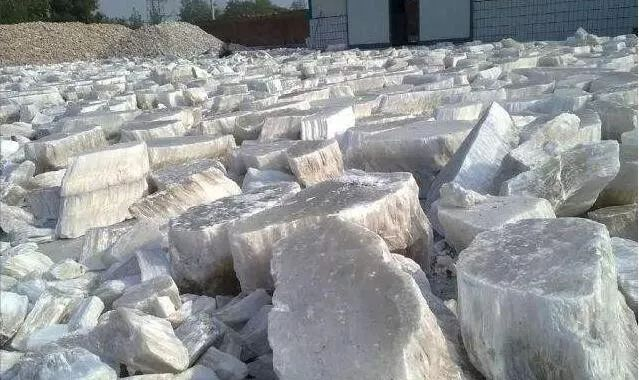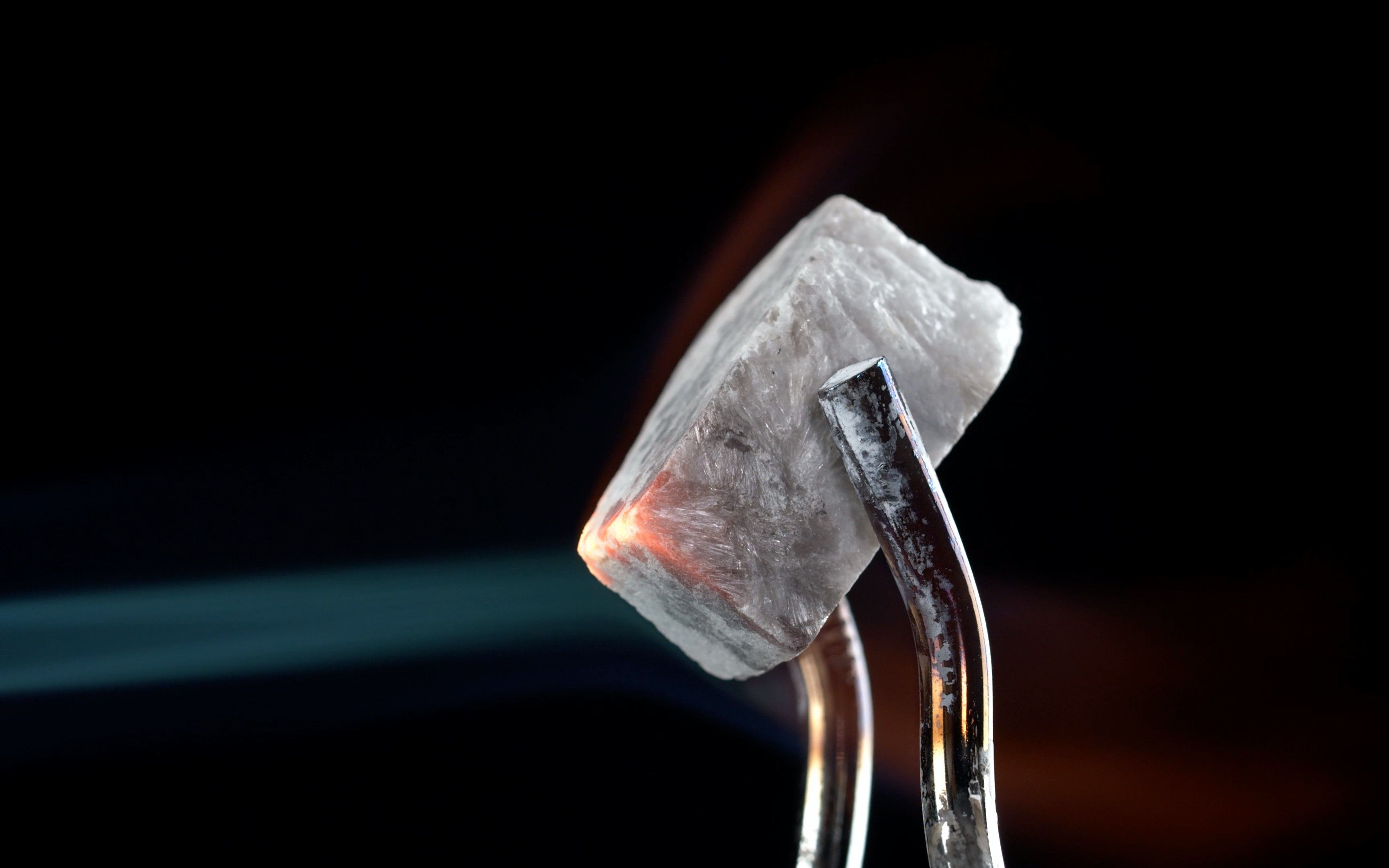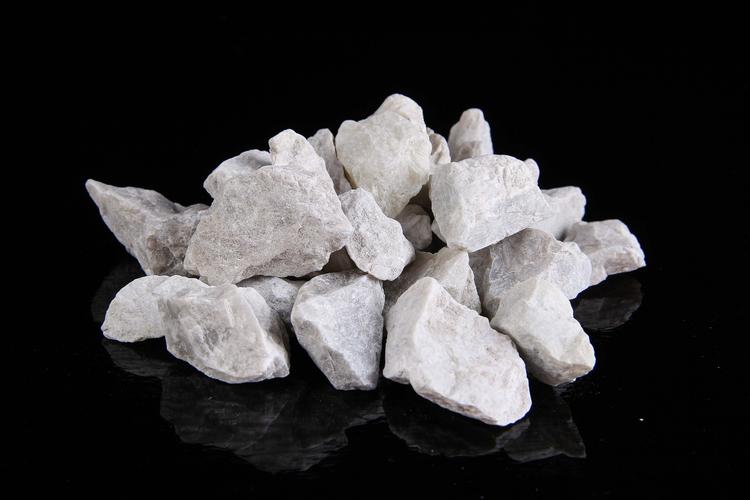 Industrial Use and Sorting of Gypsum
Aug 17, 2024
Industrial Use and Sorting of Gypsum
Aug 17, 2024
Gypsum is a non-metallic mineral with calcium sulfate as the main component. It is usually white or colorless transparent crystals and has a wide range of application value.
The formation of gypsum is closely related to geological action and is usually formed in a sedimentary environment or hydrothermal activity. In a sedimentary environment, gypsum can be precipitated from calcium sulfate in seawater or lake water; in hydrothermal activity, gypsum can be formed by cooling and crystallizing hydrothermal fluid containing calcium sulfate underground. Formation process According to the genesis and mineral composition of gypsum, it can be divided into sedimentary gypsum, hydrothermal gypsum and replacement gypsum. Among them, sedimentary gypsum is the most common type, with layered, quasi-layered and lens-shaped forms.
Gypsum is widely distributed around the world, especially in Asia, Europe and North America, where reserves and production are relatively concentrated.
Asia is one of the main distribution areas of gypsum, especially China, Iran and Thailand, which have more gypsum resources. China has abundant gypsum resources, which are distributed in many provinces across the country. Among them, Shandong Province has particularly outstanding gypsum ore reserves, accounting for 65% of the country's total reserves.
Europe is also an important distribution area for gypsum mines. France, Germany, Spain and other countries have a large number of gypsum mine resources. Among these countries, France's gypsum mine production ranks among the top in Europe.
North America, especially the United States, is one of the world's largest gypsum producers. The gypsum deposits in the United States are distributed in 22 states, with a total of 69 mines, and the largest production area is Fort Dodge, Iowa.
In addition to the above-mentioned regions, countries such as Australia, India and the United Kingdom also have a certain scale of gypsum mine resources.
The main component of gypsum ore is calcium sulfate (CaSO4), which usually exists in the form of dihydrate, that is, gypsum (CaSO4·2H2O). Gypsum belongs to the orthorhombic crystal system, and the crystals are plate-shaped or fibrous. The chemical properties of gypsum are stable and it is not easy to react chemically with other substances. However, at high temperatures, gypsum can react with alumina to form calcium aluminum silicate and other compounds.
In addition, gypsum can react with acidic substances such as hydrochloric acid to produce sulfur dioxide gas and water. The solubility of gypsum decreases with increasing temperature. It has a low solubility in water, but can be dissolved by acids, ammonium salts, sodium thiosulfate and glycerol.
When gypsum is heated at different temperatures, there are three stages of expelling crystal water: 105~180℃, first one water molecule is expelled, and then half of the water molecule is immediately expelled, turning into calcined gypsum, also known as gypsum or semi-hydrated gypsum. 200~220℃, the remaining half of the water molecule is expelled and turned into type III anhydrite. At about 350℃, it turns into type II gypsum Ca[SO4]. At 1120℃, it further turns into type I anhydrite. Melting temperature is 1450℃. The microporous structure and heating dehydration of gypsum and its products make it have excellent sound insulation, heat insulation and fire resistance.
As a multifunctional mineral, gypsum is widely used in construction, medicine, agriculture, chemical industry and many other fields. Gypsum plays an important role in the medical, construction, sculpture and other industries with its excellent properties, such as good plasticity, stability, high thermal stability and chemical stability.
In the field of construction, gypsum is mainly used for indoor partitions, ceilings, wall materials, etc. Gypsum board is widely used because of its light weight, high strength and easy processing. It can be used as a partition wall, interior wall material, and can also be used to make furniture. In addition, gypsum blocks are also a lightweight and environmentally friendly building material suitable for partition walls and interior walls.
In the medical field, gypsum is used to make plaster bandages, fixtures, etc. The fast coagulation and hardening and fast strength growth of gypsum make it an ideal material for post-fracture fixation.
In the chemical industry, gypsum can be used as a raw material for the production of sulfuric acid and cement, and can also be used as a quick-acting nitrogen fertilizer in fertilizer production. In addition, gypsum can also be used as a chemical filler in the industrial production of plastics, rubber, coatings, etc.
In the agricultural field, medium gypsum can be used as a soil conditioner to adjust the pH of the soil and improve the fertility of the soil.
Gypsum is also used in the field of sculpture, and artists use the plasticity of gypsum to create various works of art. In food processing, gypsum powder can be used as a food additive for tofu making, tablet production, etc.
With the advancement of science and technology and in-depth research on the properties of gypsum, the application field of gypsum is still expanding. It is particularly noteworthy that as a renewable resource, the use of gypsum in building materials increasingly emphasizes environmental protection and sustainability. For example, industrial by-product gypsum such as desulfurized gypsum and phosphogypsum are reused in building materials, which not only reduces the generation of waste, but also promotes the recycling of resources.
There are two main methods of mining gypsum mines: open-pit mining and underground mining. Open-pit mining is suitable for shallow and large-scale deposits. The ore is mined by stripping the covering and mining operations. Underground mining is suitable for deep and small-scale deposits. The ore is mined by opening up tunnels and mining operations.
The processing of gypsum mines mainly includes crushing, beneficiation, grinding, calcination and other processes. Crushing is to break the raw ore into small pieces. Crusher such as jaw crusher is used to break the ore into small pieces for subsequent processing.
The sorting process of gypsum ore includes many methods:
Manual sorting: suitable for small-scale and low-production mining enterprises. Workers sort according to the color and shape of the ore.
Heavy medium separation: sorting according to the density difference between the ore particles, suitable for the sorting of coarse-grained gypsum ore.
Flotation method: sorting by using the difference in physical and chemical properties between gypsum ore and impurities. By adding flotation agent, gypsum ore floats to the surface of the slurry under the action of bubbles and is separated from impurities.
Photoelectric separation: sorting by using the difference in optical properties between ore and impurities. Useful ore and waste rock are separated by photoelectric separator. This method has the advantages of high efficiency and precision, and is suitable for large-scale and high-precision occasions.
CCD Sensor Based Ore Color Sorting Machine
Mingde Optoelectronics Co., Ltd. was established in 2014. For more than 10 years, it has been professionally developing, designing, manufacturing and selling intelligent sorting equipment for mining. The ore color sorters and artificial intelligence sorters it produces can accurately sort gypsum ore.
AI Sorting Machine
Among them, the AI ore sorter introduces artificial intelligence technology and big data technology in the field of optoelectronics. It accurately extracts the surface features of ore and impurities such as texture, gloss, shape, color, etc., and forms a model through deep learning. In the subsequent sorting process, the sorted ore is compared and identified, instructions are issued, and pneumatic force is used for precise separation.
Practice has proved that the sorting effect of AI intelligent sorting machine is far better than that of traditional optoelectronic ore sorting machine.
Heavy Duty AI Ore Sorting Machine
Grinding is a step to further reduce the particle size of gypsum to meet the needs of subsequent processing or application. It is usually carried out using equipment such as ball mills.
Calcination is to remove moisture and impurities in gypsum and improve its purity and stability. The calcination process includes dry and wet methods. The appropriate process can be selected according to different needs and product requirements.
With the advancement of science and technology, especially the development of optoelectronic mineral processing technology, the sorting efficiency and accuracy of gypsum ore have been significantly improved. As a versatile building material, gypsum plays an indispensable role in many fields of modern society. From construction to medicine, to chemical industry and agriculture, the application of gypsum shows its diversity and practicality. With the deepening of gypsum research, the application of gypsum may be more extensive in the future, and it will also pay more attention to environmental protection and sustainability.
 Market Application and Sorting of Calcite
Aug 15, 2024
Market Application and Sorting of Calcite
Aug 15, 2024
 Industrial Use and Sorting of Gypsum
Aug 17, 2024
Industrial Use and Sorting of Gypsum
Aug 17, 2024
 How to Reduce the Ignition Loss of Ore?
Aug 17, 2024
How to Reduce the Ignition Loss of Ore?
Aug 17, 2024
 Industrial Application and Sorting Method of Brucite
Aug 20, 2024
Industrial Application and Sorting Method of Brucite
Aug 20, 2024